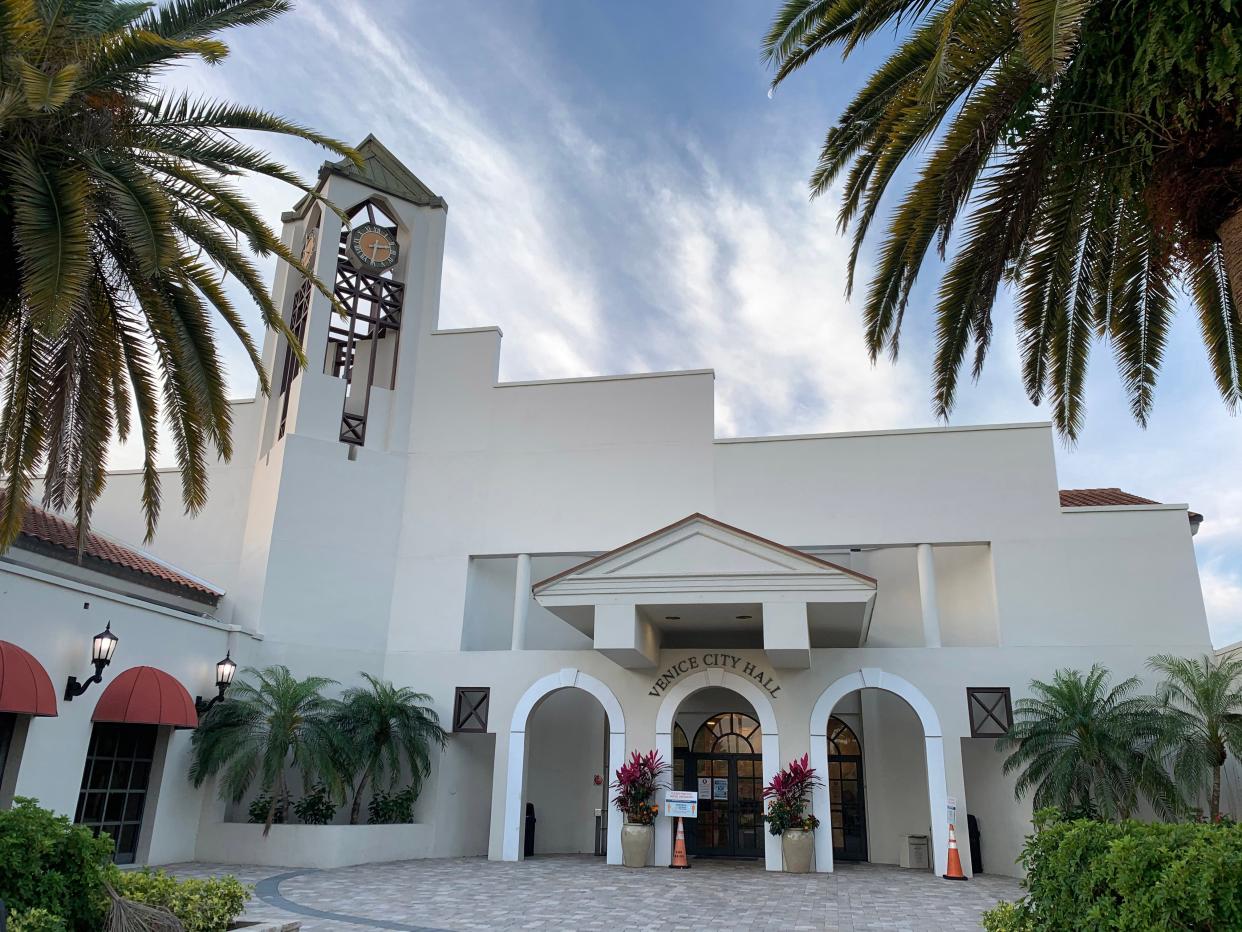Venice council rejects 317-home density increase for Vistera PUD because of compatibility

VENICE – On a convoluted path that required three separate votes, the Venice City Council rejected an application for an increase in density for the GCCF Planned Unit Development that would have increased the number of housing units from 1,300 to 1,617.
That would have meant an increase in density from 4.3 units per acre to 5 units per acre for the PUD also known as Vistera – a fact that prompted Venice Mayor Nick Pachota to make the motion against the approval because of compatibility with neighboring subdivisions in the Milano planned-unit development.
But that’s still significantly less intense than the entitlements that went with the 300-acre parcel when the Gulf Coast Community Foundation sold the property to four limited liability corporations affiliated with developer Pat Neal.
At that time, entitlements attached to the land allowed for up to 1,799 residential units – just over 5.9 units per acre – and 225,000 square feet of commercial use. Those entitlements were tied to using roughly half the property as a mixed-use affordable housing development dubbed “The Bridges.”
When asking for the affordable housing requirements to be dropped, Neal negotiated the number of homes in the PUD down to 1,300.
A 2022 decision by the Venice City Council to transfer about 24 acres from the Milano PUD to Vistera – which Neal requested in part to realign a back gate and allow for the movement of power lines – opened the door for Neal to ask for the increase in density for what is now a 323.56-acre PUD.
Prior to the 4-3 vote to approve Pachota’s motion – with Vice Mayor Jim Boldt and council members Rachel Frank and Helen Moore in dissent – the council voted down a similar motion proposed by Council Member Ron Smith.
Smith wanted to tie the denial to the fact that the council is in the midst of defining “unified control” of a planned-unit development, as well as the process to change a planned-unit development.
That motion failed on a 5-2 vote, with Smith and Council Member Joan Farrell in dissent.
That came immediately after Council member Rick Howard joined Farrell, Pachota and Smith in denying the density increase.
During the public hearing, attorney Jeff Boone argued that the concept of unified control did not apply, since nobody lived the PUD
“The overall acreage is owned by – in addition to the Neal entities – two or three other development entities,” Boone said.
Construction has currently started on 665 multifamily units on the northeast portion of the property, while another 391 single family homes – which would account for 1,056 of the allotted dwelling units.
Residents in neighboring subdivisions who opposed the density increase pointed to the recent multifamily developments lining Laurel Road west of Interstate 75 as a major concern.
“Have you driven down Laurel Road towards Jacaranda lately?” Aria Merry Lucas asked rhetorically before pointing to the increase in condominiums and townhomes and adding that it would lead to overcrowding in downtown Venice and Venice Beach, with traffic congestion already approaching that on Stickney Point Road on the way to Siesta Key.
Neal said he was asking for the density increase because the city was in the process of changing the rules governing planned-unit developments.
Ironically those concerns were raised by his efforts to build a Publix-anchored shopping center at the southwest corner of Laurel Road and Jacaranda Boulevard.
While the city council approved a land use change to allow that shopping center on July 11, 2023, the North Venice Neighborhood Alliance is appealing that decision in circuit court.
Neal told the Council that the current density increase was a reaction to the exhaustive public hearings last summer and he wanted to get the density and intensity established before any residents moved into Vistera.
“All we’re doing is reacting to what they told us, which was a planned unit development was not a planned unit development and you have to decide everything up front,” Neal told the Herald-Tribune during a phone interview after the meeting
Earlier he declined to say whether he would challenge the City Council’s decision in Circuit Court but did indicate he will continue to push for the density increase.
“To quote Yogi Berra, ‘It ain’t over til it’s over,” Neal said, “There will be a lot to play out as we help the city come to a better decision.”
Plaque to mark residents of ‘Blackburn Quarters’
On a unanimous vote, the council directed staff to bring back cost estimates and possible location to list the names of 52 families who once lived in Blackburn Quarters – the segregated community that predated Grove Terrace, a public housing project that has since been replaced by Venetian Walk II.
The plaque would be put in place as part of a celebration in April 2025 to mark the 70th anniversary of Union Missionary Baptist Church, which was placed on Venice’s list of Historical Resources in September 2022.
The Rev. James Mitchell, pastor of the church, grew up in both the Quarters and Grove Terrace.
Venice Pavilion nominated for local historical register
The council unanimously approved nomination of the Venice Beach Pavilion, which opened up in 1964 at 101 The Esplanade, to both the city’s local Historical Resources register and the National Register of Historic Places.
Assistant City Manager James Clinch clarified that the structure’s iconic hyperbolic paraboloid roof will not be replaced.
“Being a coastal structure built with very old construction methods and materials on the beach for 60 years it has completely deteriorated,” Clinch said. “It would be a replacement of the roof using modern materials that will preserve the architectural detail and design.”
This article originally appeared on Sarasota Herald-Tribune: Density increase for Laurel Road development denied on 4-3 vote

